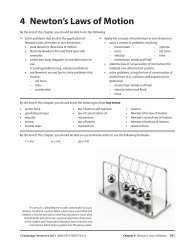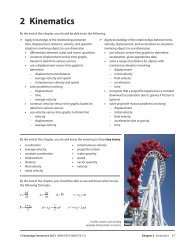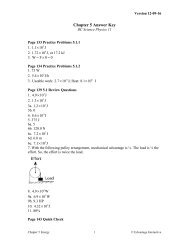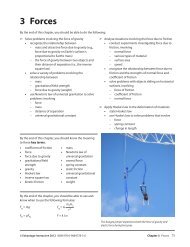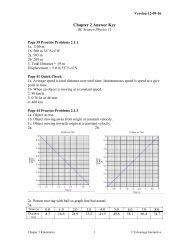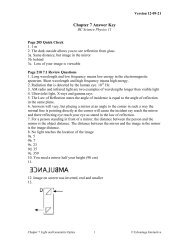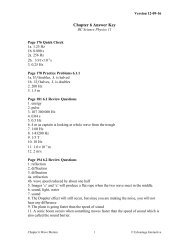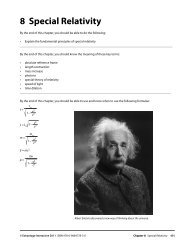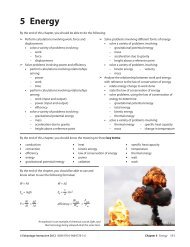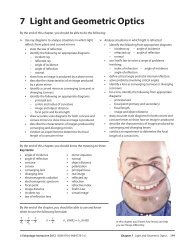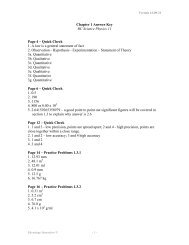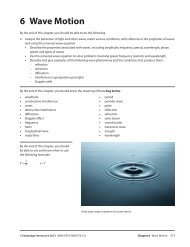Draft BCPhysics11-4 Edvantage Interactive.pdf - BC Science ...
Draft BCPhysics11-4 Edvantage Interactive.pdf - BC Science ...
Draft BCPhysics11-4 Edvantage Interactive.pdf - BC Science ...
Create successful ePaper yourself
Turn your PDF publications into a flip-book with our unique Google optimized e-Paper software.
4.3 Newton’s Third Law of Motion<br />
Warm Up<br />
1. Consider the following situations. Draw a sketch of each situation and, on each diagram, indicate the forces<br />
being described. Share your results with the class.<br />
(a) If you wish to climb stairs, in which (c) If you are rowing a boat, which way must your<br />
direction do you push? Which way to you oars push if the boat is to move forward? Which<br />
move? way to do you move?<br />
(b) If you wish to swim forward, in which (d) When a car is moving forward, in which<br />
direction must your arms push? Which direction do the wheels push on the road? Which<br />
way do you move? way to do you move?<br />
Action and Reaction<br />
Forces<br />
Isaac Newton observed that whenever forces exist between two bodies, the forces are<br />
mutual. If one body pushes on another, the other body exerts an equal force on the first<br />
body, but in the opposite direction. To do push-ups, for example, you push down on the<br />
floor. The floor exerts an equal force up on you. The floor lifts you up! Earth exerts a force<br />
of gravity on the Moon. What evidence is there that the Moon exerts an equal force on<br />
Earth?<br />
Newton studied situations involving forces between pairs of bodies and he stated<br />
his conclusions about mutual forces between pairs of bodies as his third law. Newton’s<br />
third law of motion is also called the law of action and reaction.<br />
If two bodies interact, the force the first body exerts on the second body will equal<br />
the force the second body exerts on the first body. The two forces will be opposite in<br />
direction and will act simultaneously over the same interval of time.<br />
176 Chapter 4 Newton’s Laws of Motion — DRAFT © <strong>Edvantage</strong> <strong>Interactive</strong> 2011 ISBN 978-0-9864778-3-6



